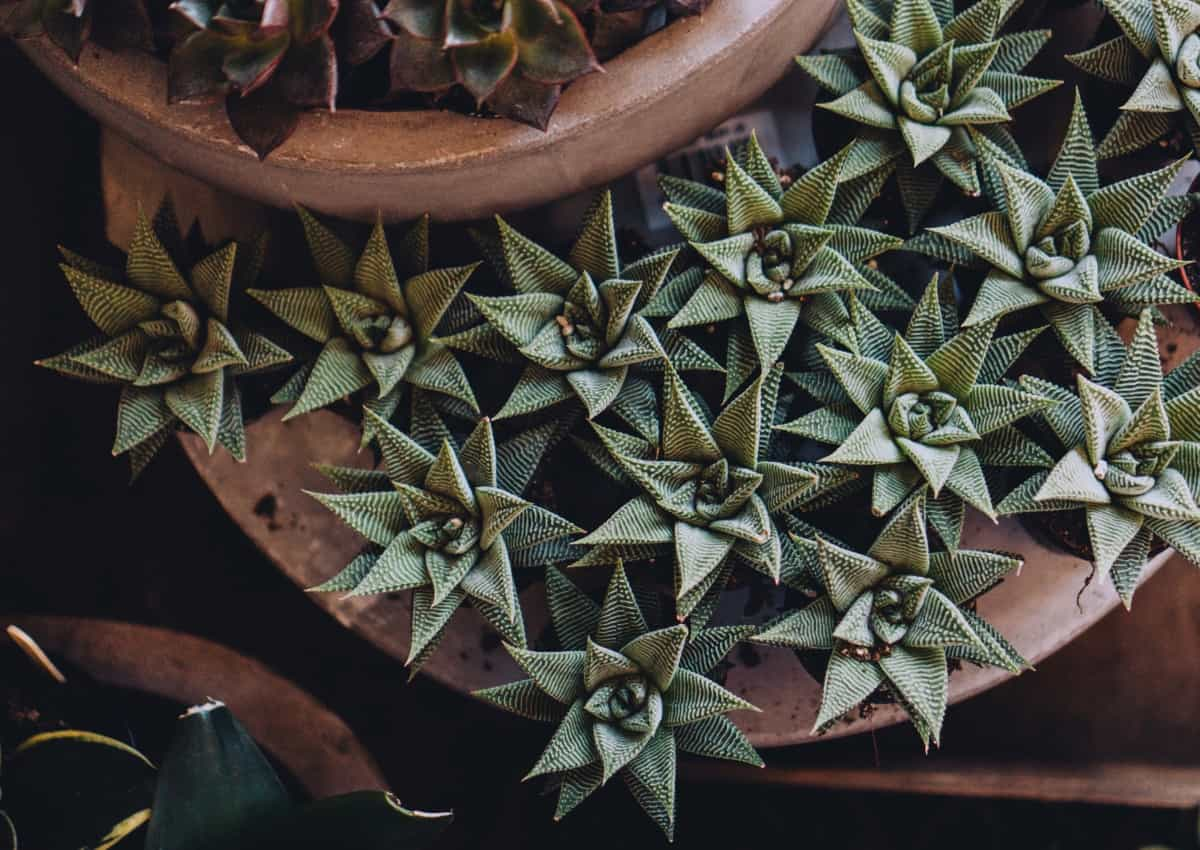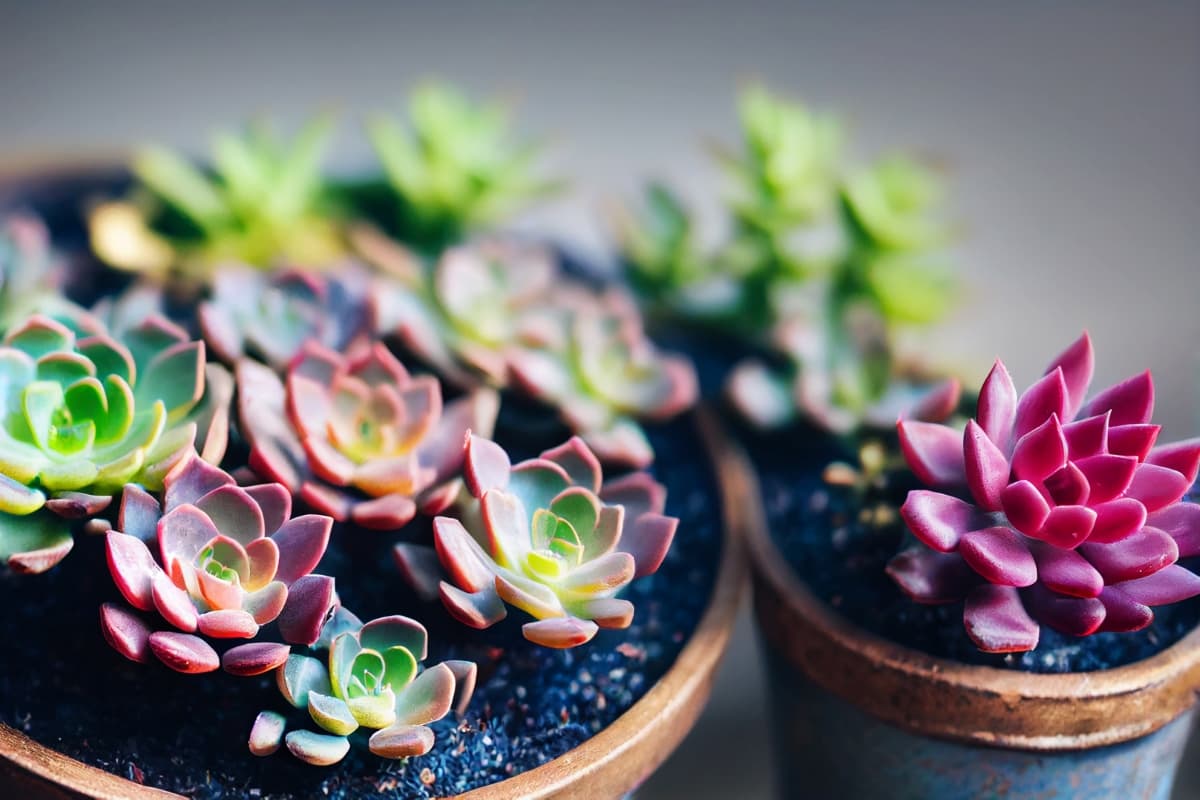If you’re looking for a low-maintenance and visually stunning addition to your home, succulents are the perfect choice. The beauty of these gardens lies not only in their visual appeal but also in their low-maintenance nature. Succulents are known for their ability to store water within their leaves and stems, allowing them to thrive even with minimal care.

How to Start an Indoor Pot Succulent Garden
Basics of Indoor Pot Succulent Gardening
Do succulents grow well in pots? Indoor pot succulent gardens are a delightful way to bring the beauty of nature into your home. These miniature plant havens consist of carefully selected succulents in decorative pots or containers designed for their unique needs. But what exactly is an indoor pot succulent garden? It’s a curated collection of succulents arranged in a single container, creating a stunning display that can be enjoyed indoors all year round. Next, find an ideal location that receives enough light without subjecting your plants to direct sunlight which can scorch them.
DIY Succulent Planting in Containers: Choose the Right Containers
Succulents have shallow roots, so opt for smaller pots that provide adequate drainage. Material is another important consideration. While terracotta or ceramic pots are popular for their breathability and natural aesthetic appeal, direct sunlight can heat them quickly. Choosing ceramic pots that won’t be exposed to excessive heat may be best if you keep your succulents indoors.
Creating an indoor pot succulent garden is relatively simple. You can start by selecting the right containers for succulents, as shallow bowls or squat pots work well for most varieties due to their shallow root system. Additionally, consider the style of the container. Remember that each succulent has different moisture requirements. Some prefer drier conditions, while others thrive with more frequent watering.
Selecting the Ideal Location for Your Indoor Pot Succulent Garden
Selecting the perfect location for your indoor pot succulent garden is crucial to ensure the health and vitality of your plants. Do succulents need direct sunlight? Succulents thrive in bright, indirect sunlight, so finding a spot in your home that provides the right light is important.
In case you missed it: 10 Best Large Succulent Plants to Add to Your Garden

South-facing windows are usually a good choice, providing ample sunshine without too much intensity. In addition to lighting conditions, consider the temperature and humidity levels of the chosen location. Humidity is another factor to keep in mind. While most succulents are adapted to arid environments and tolerate lower humidity levels, excessively dry air can lead to dehydration and wilting.
Essential Tools and Supplies for Starting an Indoor Pot Succulent Garden
Firstly, you’ll need a set of gardening gloves to protect your hands from thorns or prickly spines on certain types of succulents. Next, invest in good-quality potting soil specifically formulated for succulents. For containers, opt for shallow pots with drainage holes at the bottom. Terracotta pots are popular as they allow air circulation and absorb excess moisture.
Don’t forget about watering tools such as a spray bottle or can with a narrow spout. Succulents prefer gentle misting rather than heavy drenching. What is the best pot for succulents indoors? When choosing the perfect pot for indoor succulents, there are a few factors to consider. At the same time, terracotta and ceramic pots are generally recommended for their ability to provide proper drainage.
Selecting the Right Soil Mix for Your Indoor Pot Succulents
It is crucial to their overall health and growth. Regular potting soil can often be too dense and retain too much moisture, leading to overwatering. To create a well-draining soil mix for your indoor succulents, you’ll want to combine regular potting soil with materials that improve drainage. One popular option is adding perlite or pumice into the mixture. These lightweight volcanic rocks help create soil air pockets, allowing excess water to drain away from the roots.
Another ingredient commonly used in succulent soil mixes is coarse sand or grit. This helps improve drainage even further by preventing compacted soils that could suffocate the roots. Remember, selecting the right soil mix for your indoor pot succulents is essential for their long-term health and vitality.
Propagating Succulents: Starting from Seeds, Cuttings, or Offsets
How do you grow succulents in pots indoors? Starting from seeds allows you to grow succulents from scratch. You’ll need a well-draining soil mix and some small containers to sow the seeds in. Remember that not all succulents produce viable seeds, so research before attempting this method. Another popular method is propagating succulents from cuttings.
This involves taking a healthy leaf or stem cutting from an existing plant and allowing it to develop roots on its own. Let the cut end callus over for a few days before placing it in dry soil or water until roots form. Offsets are tiny baby plants that naturally grow alongside the parent plant. They can be gently separated and planted individually to create new succulent arrangements. Whichever propagation method you choose, remember that each one requires specific care instructions for success.
Proper Watering Techniques for Indoor Pot Succulents
It is essential for their health and longevity. Make sure your succulent pots have drainage holes at the bottom. This allows excess water to escape and prevents waterlogging. Do potted succulents need water? It’s best to water your succulents thoroughly but infrequently. Overwatering can cause the roots to become mushy and susceptible to disease.
In case you missed it: How to Revive Dying Succulents: Reasons, Treatment, and Solutions

Aim for a deep drench rather than a light sprinkle when it comes time for watering. This encourages the roots of your succulents to grow deeper in search of moisture and promotes overall plant health. Remember that different types of succulents may have varying preferences regarding moisture levels.
Providing Adequate Lighting for Your Indoor Pot Succulent Garden
Succulents need plenty of light to thrive and protection from harsh direct sunlight. One option is to place your succulent pots near a bright window. If you don’t have access to sufficient natural light, artificial grow lights are an excellent alternative. LED grow lights provide the right spectrum and intensity of light for optimal succulent growth. You can set up these lights above your indoor garden area and leave them on for 12-14 hours daily.
Remember to monitor your plants closely as they acclimate to new lighting conditions. It might indicate insufficient or excessive lighting if you notice stretching or discoloration (pale or yellow leaves). By providing adequate lighting for your indoor pot succulent garden, you’ll ensure healthy plant growth and vibrant foliage that will beautify any space in your home.
Maintaining Temperature and Humidity Levels for Indoor Succulents
These hardy plants thrive in warm, dry conditions, which mimic their natural habitat. Indoor succulents prefer temperatures between 15-24°C. Humidity is another important factor when caring for your indoor succulent garden. Most succulents thrive in low-humidity environments with around 40-50% humidity.
If you live in an area with high humidity, consider using a dehumidifier or placing your plants near a fan to improve air circulation. By maintaining optimal temperature and humidity levels for your indoor succulents, you are providing them with the best possible growing conditions.
Troubleshooting Common Issues in an Indoor Pot Succulent Garden
One common issue is overwatering. Succulents are adapted to arid environments. Overwatering the Succulents can lead to root rot and the demise of your plants. Another issue that may arise is inadequate lighting. While succulents generally thrive in bright sunlight, they can also adapt well to indoor conditions if given proper light exposure. Place your pots near a south-facing window where they will receive at least six hours of indirect sunlight daily.
In case you missed it: Top 10 Edible Cacti and Succulents You Can Grow Indoors

Pests such as mealybugs or spider mites may occasionally infest indoor succulents. Regularly inspect your plants for infestation signs, such as sticky residue or leaf webbing, to combat these pests. You can remove them manually or use organic pest control methods like neem oil spray. Be mindful of temperature and humidity levels in your home, as extreme fluctuations can stress succulents.
Conclusion
Most houseplant indoor succulent plants have shallow roots, so you’ll want to choose containers that provide enough room for their roots without overwhelming them. Shallow bowls or squat pots are ideal options for this purpose. You’ll need some essential tools and supplies to get started with your own indoor pot succulent garden. A small trowel will be useful for planting, while a well-draining soil mix specifically formulated for succulents is necessary to ensure proper growth.
- Feed Your Flock for Less: Top 10 Tips to Save on Chicken Feed
- Ultimate Guide to Ossabaw Island Hog: Breeding, Raising, Diet, and Care
- Hatching Answers: The Top 10 Reasons Your Chickens Aren’t Laying Eggs
- Eggs and Economics: Breaking Down the Cost of Raising Backyard Chickens
- Defend Your Greens: Proven Methods to Keep Iguanas Out of Your Garden
- Ultimate Guide to Cinnamon Queen Chicken: A Comprehensive Guide for Beginners
- Ultimate Guide to California Tan Chicken: Breeding, Raising, Diet, Egg-Production and Care
- Ultimate Guide to Marsh Daisy Chicken: Breeding, Raising, Diet, and Care
- 10 Types of Chicken Farming Businesses You Can Start for Profits